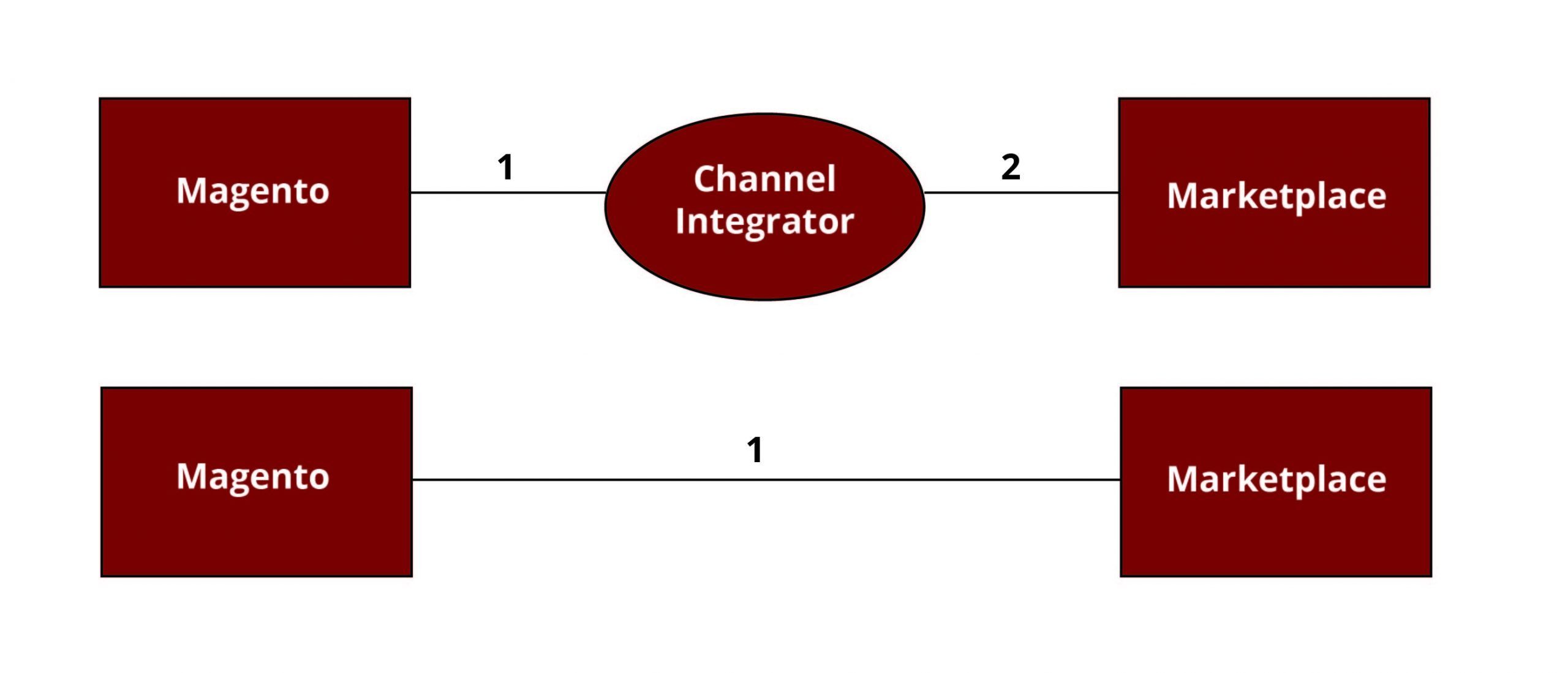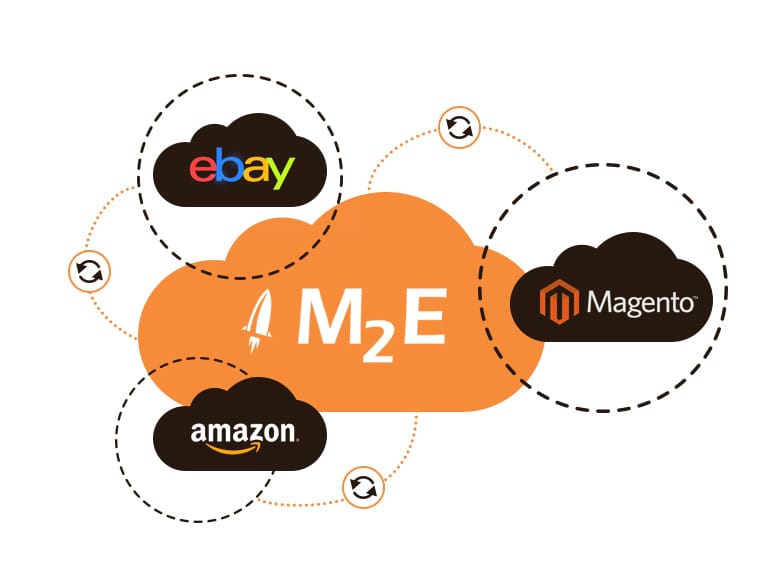
There is no shortage of Magento marketplace integrations available. In addition to a number of third-party alternatives, Magento has released their own Amazon Sales Channel integration product. Magento continues to develop new features for their tool, but it’s still a fairly new feature and limited to only Amazon. More popular options are channel integrators, such as Channel Advisor and SellerCloud, but we’ve learned separate integrations like these require more budget and patience than any merchant should have to tolerate.
Avoid Separated Apps
When managing a bidirectional synchronization, it is most efficient to have as few endpoints as possible to avoid multiple potential chokepoints. The biggest drawback for Magento merchants using other SAAS solutions is managing two integrations and two separate catalogs in different interfaces. For example:- There always ends up being data, content or images in one system that don’t sync across all platforms which lead to fishing expeditions when making updates and optimizations.
- It takes additional time and resources to determine if something failed to sync between Magento and the SAAS software, or the software and Amazon.
- SAAS solutions and marketplaces have APIs to communicate with each other, and experience downtime or issues with APIs just like any other software.
- Troubleshooting why an order didn’t import or why inventory is incorrect takes time, which can cause delays in resolving issues, drastically affecting your marketplace seller rating.

A Direct Integration is Easier to Manage
A module sitting within Magento simply has fewer opportunities to fail than a separate SAAS solution. Think about all of the elements that are in-play: inventory, pricing, product names, images, orders, and tracking to name a few. With a 3rd party app, any time you make a change in Magento, those changes have to be synced with the 3rd party software and then again to the marketplace. For example if you update an image within Magento and it’s not appearing on Amazon, you now have to begin troubleshooting two different endpoints.
Our Recommendation
Having our fair share of experience in this field, we recommend M2E Pro over any other Magento-to-marketplace integration. It’s the most mature solution, being the original Magento to eBay integration, and then evolving to other marketplaces including Amazon and Wal-Mart over the years. Other module developers have built Amazon and marketplace integrations as well, such as Mageworx, Webkul and Mag-Manager, but those solutions aren’t as feature rich, easy to use or mature as M2E Pro.

M2E Pro is open source, which means it is customizable to match any functionality you already have set up within Magento. For example, we have worked with a number of auto parts and accessories retailers to import fitment records and data with eBay Motors and Amazon Automotive.
Their customer support is stellar, providing software support and training for all subscribing merchants. Since M2E is a very mature solution, there is a large community forum and knowledge base with up-to-date documentation and training. M2E also provides a managed services option, if you would like to have one of their account managers responsible for listing strategy and optimization.
Some merchants think they need to go with a 3rd party SAAS solution if they want someone to manage their marketplace account and listings, but that simply isn’t true. While M2EPro does offer managed services for additional fees, you have the option to manage your account directly or use any provider you wish. Please contact us if you would like more information regarding Magento integrations, marketplace on-boarding or listing management.
Conclusion
If you need to know more about marketplace integrations and how to get the most out of your eCommcerce site, contact us today. We’re open and servicing all of our customers during these turbulant times.

